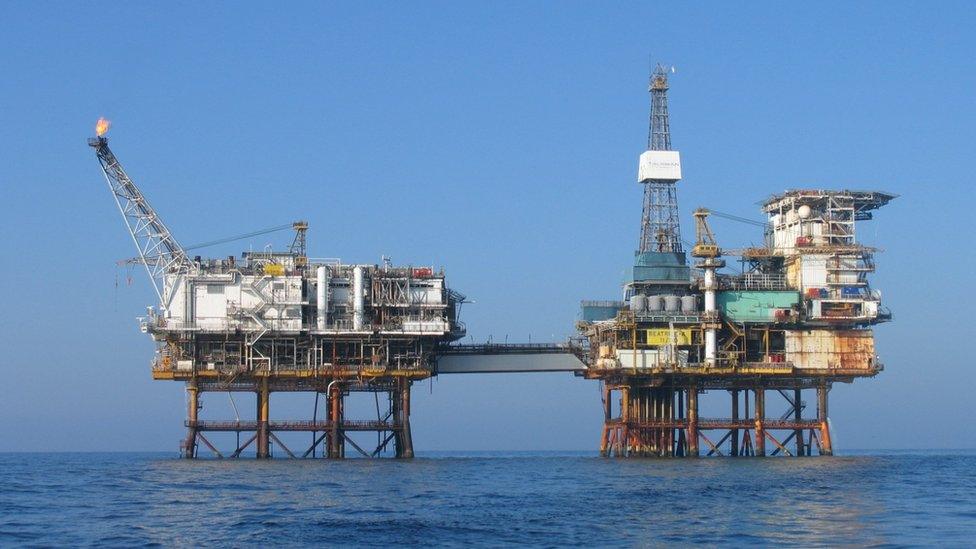Plan to fully decommission the Beatrice oil field
- Published

The Beatrice field lies off the west Caithness coast
Plans are being put together to fully decommission the Beatrice oil field in the Moray Firth.
Production at the field has ceased and it has been proposed to remove the platform complex, two demonstrator wind turbines, and cables.
These operations could take place between 2024 and 2027.
The Ministry of Defence (MoD) had an interest in using the complex as a training facility, but it has decided not to pursue this idea further.
This decision means a decommissioning programme approved by the UK government in 2004 has been updated and widened out to include the removal of the field's platforms and other structures.
Energy company Repsol Sinopec Resources UK has set out details of the planned decommissioning and uploaded an environmental impact assessment scoping report online, external.
The field, about 13 miles (22km) off the Caithness coast, forms part of the site of a massive offshore wind farm project.
The planned decommissioning project involves the removal of five platform structures and power cables.
Forty three wells in the field are to be "plugged" and abandoned.

Beatrice - a brief history
The field was discovered in September 1976 by Mesa Petroleum and production began on a test basis in September 1981.
Five wells were initially brought on-stream at a combined rate of about 20,000 barrels of oil per day.
Several companies have owned the field over the years. Talisman Energy, now Repsol Sinopec Resources UK, acquired the facilities in 1996.
At its peak, the Alpha platform was capable of producing between 30,000 and 35,000 barrels of oil per day.
The Bravo platform was installed in 1983, followed by the Charlie platform which increased output to a peak of 54,000 barrels of oil per day.
In total there have been 43 wells drilled from the Beatrice facilities.

Two wind turbines installed to show that the firth is suitable for a large-scale offshore wind farm are also to be removed.
The turbines were installed in two phases with the first in 2006 and the second in 2007.
When the first turbine was installed at Beatrice, it set a number of records.
These included it being the largest offshore wind turbine in the world, the first to be installed in a single lift from a floating vessel and the furthest turbine from shore and in the deepest water.
Another company, Ithaca Energy, is responsible for the decommissioning of its Jacky platform and the related pipelines tied into the Beatrice field.

The Ministry of Defence was potentially interested in using the field's platforms for military training
The field and its infrastructure is to be decommissioned because production ended at the site in March 2015, and also because the MoD's decision decided not to go ahead with a plan to use the platforms complex for military training.
Repsol Sinopec Resources UK expects a jack-up unit to arrive at the site next month.
The unit will be used in the plugging and abandoning of the wells. Plugging means sealing the wellbore from the reservoir oil to prevent hydrocarbons from reaching the surface.
The unit will also be used in the clean-up of the Beatrice field facilities.
Repsol Sinopec Resources UK said it has also begun notifying the public and non-governmental organisations to its decommissioning proposals, and seeking comments on them.
Beatrice is among the UK's best known oil fields, being visible from the shores of the Moray Firth, in particular the east Sutherland and Caithness coasts.